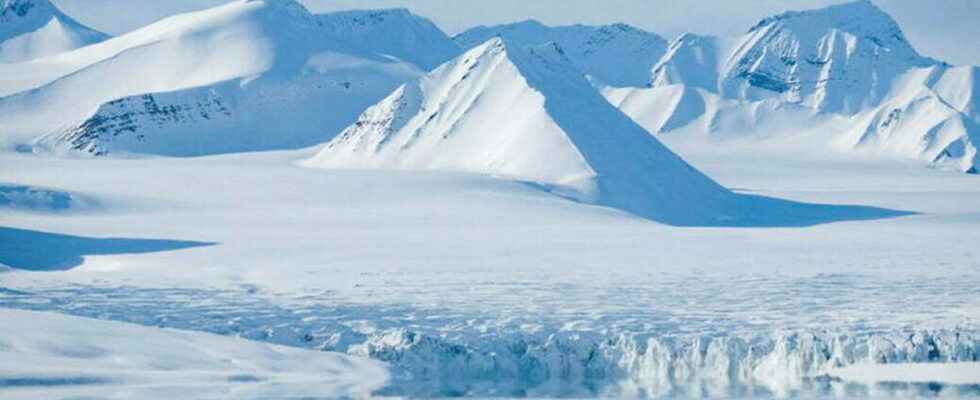L’The Arctic has warmed nearly four times faster than the rest of the world over the past forty years. These conclusions, from a new study published this Thursday, August 11, raise fears of an underestimation of the climate models of the poles, whose warming has a major influence on the rise in sea levels. The study, published in the journal Communications Earth & Environment of the Nature group, significantly reassesses the rate of warming of the region around the North Pole.
In 2019, the United Nations Panel of Climate Experts (IPCC) estimated that the Arctic was warming “more than twice the global average”, as a result of a specific process in the region. This phenomenon, called “Arctic amplification”, occurs when sea ice and snow, which naturally reflect the sun’s heat, melt into seawater which absorbs more solar radiation and heats up.
Although scientists have long agreed on the observation of an accelerated warming of the Arctic, their estimates of the phenomenon differ however according to the period they choose to study or the definition, more or less extensive, of the geographical area. of the arctic. In the new study, the researchers, based in Norway and Finland, analyzed four sets of temperature data collected across the entire Arctic Circle by satellites since 1979 – the year satellite data first became available. They concluded that the Arctic has warmed an average of 0.75°C per decade, almost four times faster than the rest of the planet.
READ ALSOLuc de Barochez – The North Pole, eldorado of the century
Researchers “surprised” by their results
Due to greenhouse gases generated by human activities, mainly fossil fuels, the planet has already warmed by nearly 1.2°C since the pre-industrial era. “The scientific literature considers that the Arctic is warming about twice as fast as the rest of the planet, so I was surprised that our conclusion was much higher than the usual figure”, explains to Agence France-Presse Antti Lipponen, member of the Finnish Meteorological Institute and co-author of the study.
However, the study found large local variations in the rate of warming within the Arctic Circle. For example, the Eurasian sector of the Arctic Ocean, near the Norwegian archipelago of Svalbard and the Russian one of Novaya Zemlya, has warmed by 1.25°C per decade, approximately seven times faster than the rest. of the world.
The team found that the most advanced climate models predicted Arctic warming about a third lower than their own data show. This discrepancy, according to them, could be explained by the obsolescence of previous models of the Arctic climate, which are constantly being improved. “The next step might be to take a look at these models, see why they don’t predict what we see in observations and what impact that has on future climate projections,” said Antti Lipponen.
READ ALSOClimate: the disappearance of many glaciers is “already irreversible”
“It will affect us all”
The intense warming of the Arctic, in addition to a serious impact on the inhabitants and on the local fauna, which depends on the continuity of the sea ice for hunting, will also have global repercussions. “Climate change is man-made and as the Arctic warms, its glaciers will melt, which will have a global impact on sea levels,” said the expert. “Something is happening in the Arctic and it will affect us all,” he worries.
The melting of the ice cap is the main driver of sea level rise, ahead of the melting of glaciers and the expansion of the ocean due to the warming of the water. The melting of the pack ice (ice on the oceans) does not raise the sea level. According to the IPCC, the sea level has risen by 20 cm since 1900. However, the rate of this rise has almost tripled since 1990 and, depending on the scenarios, the oceans could gain another 40 to 85 cm by the end of the century. The Greenland Ice Sheet, which recent studies may be approaching the ‘tipping point’ of melting, contains an amount of icy water capable of raising the level of Earth’s oceans by up to six metres.
READ ALSODo natural disasters affect our relationship to climate risk?
